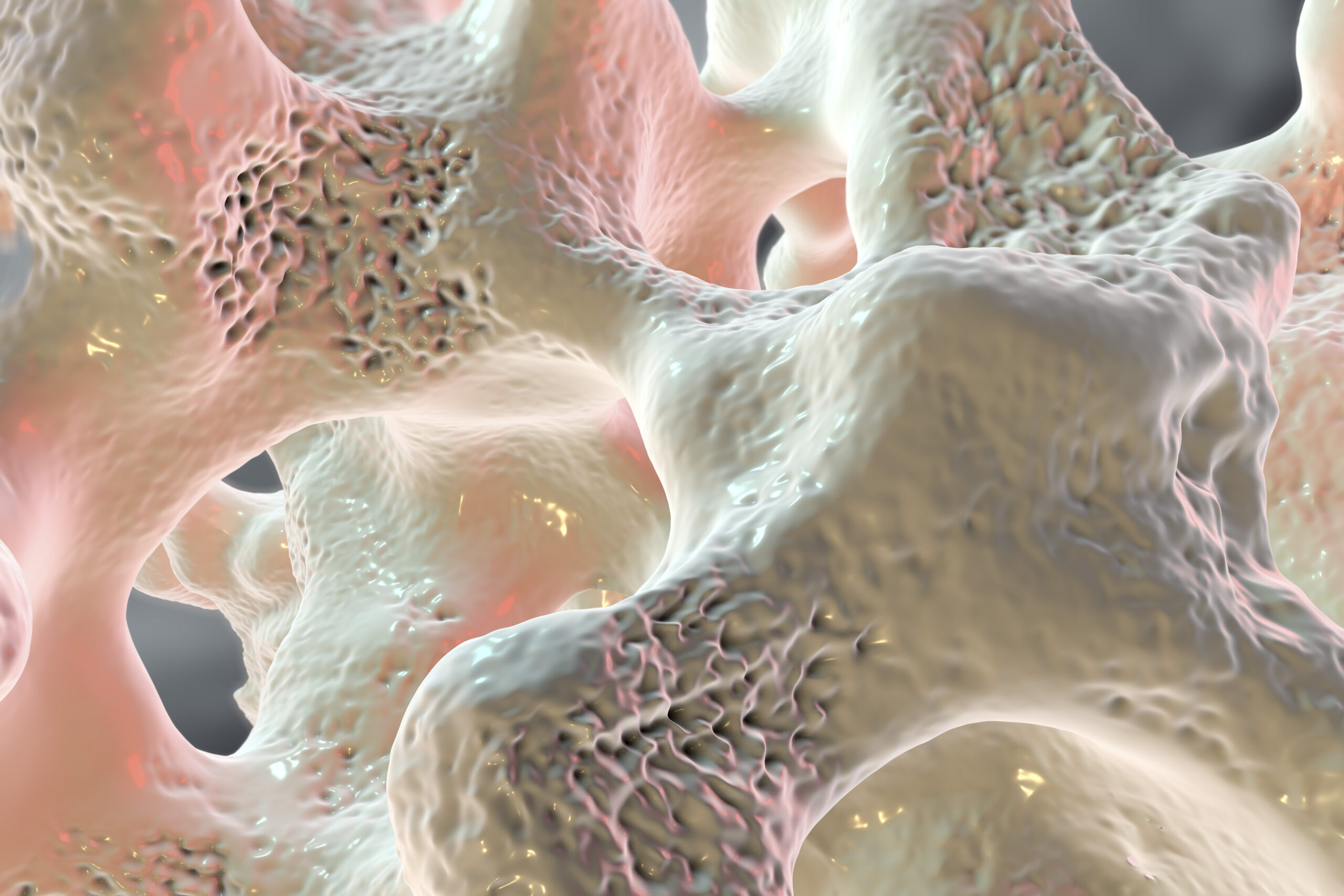Kisspeptin hormone can enhance human bone activity

Kisspeptin, a naturally-occurring hormone, has been found to increase the activity of bone-forming cells in the body for the first time.
The discovery has led to hopes that the hormone could be a welcome new target for osteoporosis treatment.
Osteoporosis is a major global health problem, resulting in millions of bone fractures worldwide every year. Osteoporosis is usually caused when the delicate balance between the activity of bone building cells (osteoblasts) and bone-destroying cells (osteoclasts) in the skeleton is destabilised.
Current treatments for osteoporosis such as bisphosphonates have frequent side-effects, are unsuitable for many patients and can only be used for a limited amount of time. Unfortunately, currently no new treatments in late-stage clinical trials exist.
Bone-building cells
In an exploratory clinical study, published in the Journal of Clinical Endocrinology & Metabolism, researchers at Imperial College London gave a short, 90-minute infusion of kisspeptin to 26 healthy men at Imperial College Healthcare NHS Trust. During the study, they monitored bone parameters including the bone-activity marker, osteocalcin. The researchers saw that osteocalcin increased markedly by 24 per cent when kisspeptin was infused compared to a placebo, suggesting rapidly increased activity in bone-building cells.
At the same time, a second arm of the study, carried out in collaboration with colleagues at the University of Southern Denmark, treated ‘in vitro’ bone cells in the laboratory with kisspeptin. Here, the researchers found that kisspeptin not only stimulated the activity of osteoblasts, but also inhibited the activity of osteoclasts – the bone-destroying cells.
First author of the study, Dr Alexander Comninos, Consultant Endocrinologist and Honorary Clinical Senior Lecturer in the Department of Metabolism, Digestion and Reproduction at Imperial College London, said: “In the clinical study, we showed that kisspeptin can, very quickly, stimulate the activity of bone-forming cells. By using only a quick infusion, we also showed that this stimulation is independent of any effect on reproductive hormones as the men’s testosterone didn’t change within that time.”
Dr Comninos, who also leads the Imperial Endocrine Bone Unit atImperial College Healthcare NHS Trust, believes the laboratory study shows an additional aspect.
He explained: “Most existing treatments we have for osteoporosis tend to eventually either inhibit both types of bone cells, or increase activity in both types of bone cells, because of the way the cells communicate. But with our laboratory study, kisspeptin appears to increase bone-forming activity and at the same time inhibit the bone-destroying activity. This ‘de-linking’ effect means kisspeptin could have a distinct benefit as a potential treatment, if this is confirmed in future studies.
“It is very early days, but we hope to take these novel exploratory results forward in future studies with the ultimate aim to see if kisspeptin could be a new safe and effective treatment option for osteoporosis.”
Future studies are needed to build on these early-stage findings, particularly in longer and larger studies, as well as in patients with osteoporosis.
Kisspeptin is a particularly exciting prospect for a drug target, since it is naturally occurring and known to be very well tolerated. It is a natural hormone that plays an important role in reproduction and has been given in human studies for many years without significant side effects. This is the first study to explore its benefits in human bones. Previous studies have also shown that it can be used in IVF and can boost sexual brain activity.